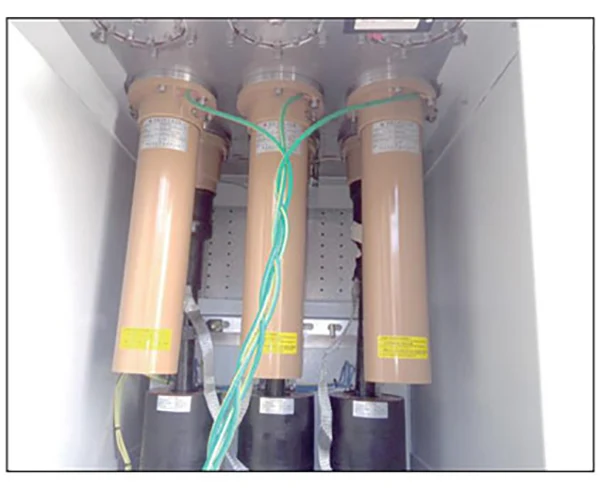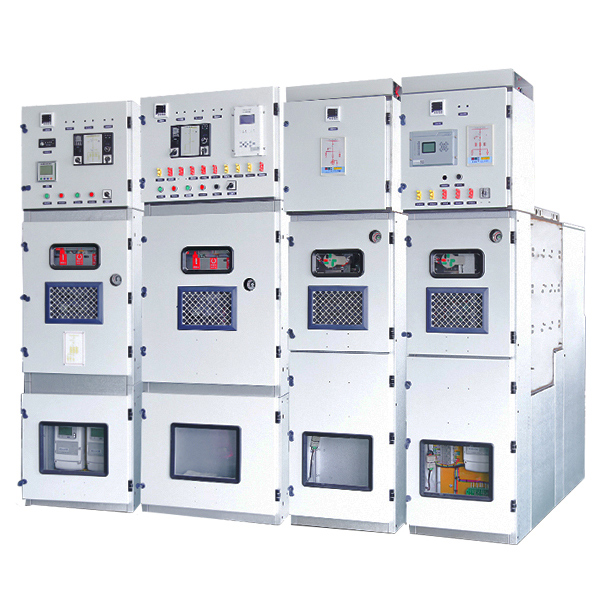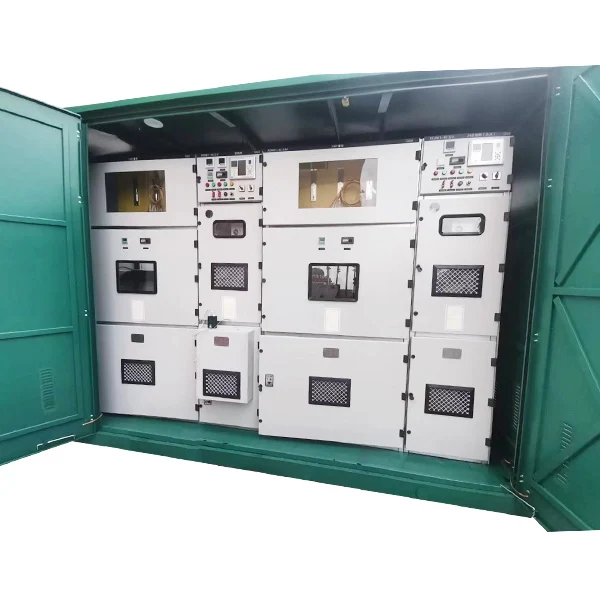40.5KV 3150A Medium Voltage Gis Gas Insulated Switchgear
In recent years, the engineering construction landscape has evolved in response to societal, economic, and technological advancements. There is an increasing demand for compact, intelligent, and low-maintenance switch equipment. Domestic and international manufacturers are actively developing 40.5KV 3150A Medium Voltage Gis Gas Insulated Switchgear (C-GIS), which enclose high-voltage components like busbars, circuit breakers, isolating switches, and power cables within a pressure-reduced shell.
Model:40.5KV 3150A high voltage Inflatable cabinet
Send Inquiry
Product Features
1. By utilizing sulfur hexafluoride gas as a protecting and arc extinguishing medium, the size of the switchgear can be considerably reduced, leading to a more compact and smaller style.
2. The conductive part of the major circuit, which is extremely reliable and safe, is secured in SF6 gas, maintaining the high-voltage online conductor confined and untouched by external factors. This makes certain long-term safe operation and high integrity of the equipment.
3. There is no threat of electric shock or fire.
4. The 40.5KV 3150A Medium Voltage Gis Gas Insulated Switchgear is designed with an independent modular structure, with the air box made from a high-precision lightweight aluminum plate and can be disassembled. The isolation switch takes on a straight transmission with three positions. To decrease control relay and circuit complications, an added control component with virtually 100 PLC points is included for grounding, seclusion buttons, and remote procedures. The device button is modular, attaching opening and closing points with plum blossom contacts. This gets rid of the possibility of non-operation in the original rotary isolation switch and grounding button, resolves the problem of unsteady and too much get-in-touch with resistance in the original rotary seclusion switch, and includes securing and voltage equalization covers on each get-in-touch with's outside to deal with partial discharge problems throughout button breakpoints production.
5. The 40.5KV 3150A Medium Voltage Gis Gas Insulated Switchgear is hassle-free to apply and prepare. It can be utilized as an independent system and meet different major wiring requirements via mix. Supplying it to the site as units can reduce on-site installation and improve integrity.
Execution standards
IEC 62271-200: 2011 High-voltage switchgear and controlgear - Part 200: AC metal-enclosed switchgear and controlgear for rated voltages above 1 kV and up to and including 52 kV
IEC 62271-102:2013 6.2 High-voltage switchgear and controlgear - Part 102: Alternating current disconnectors and earthing switches
IEC 62271-100: 2017.6.2 High-voltage switchgear and controlgear - Part 100: Alternating-current circuit-breakers
GB/T11022-1999 Common technical requirements for high-voltage switchgear and control equipment standards
GB3906-2006 3.6kV~40.5kV AC Metal Enclosed Switchgear and Control Equipment
GB311.1-1997 Insulation Coordination of High Voltage Transmission and Transformation Equipment
GB/T16927.1-1997 High voltage testing technology Part: General test requirements
GB/T16927.2-1997 High voltage testing techniques Part 2: Measurement systems
GB/T7354-2003 Partial discharge measurement
GB1984-1989 AC High Voltage Circuit Breakers
GB3309-1989 Mechanical tests of high-voltage switchgear at room temperature
GB4208-2008 Code for Degree of Protection Provided by Enclosures (IP)
GB12022-2006 Industrial sulfur hexafluoride
GB8905-1988 Guidelines for gas management and inspection in sulfur hexafluoride electrical equipment
GB11023-1989 Test method for sulfur hexafluoride gas sealing of high-voltage switchgear
GB/T13384-1992 General technical requirements for packaging of electromechanical products
GB4207-2003 Solid insulation materials - Determination of relative and resistance to electrical trace index under humid conditions
GB/T14598.3-2006 Electrical relays - Part 5: Insulation of electrical relays
GB/T17626.2-1998 Electromagnetic Compatibility Testing and Measurement Techniques - Electrostatic Discharge Reactance Interference Test
GB/T17626.4-2008 Electromagnetic Compatibility Testing and Measurement Techniques - Electrical Fast Transient Pulse Group Immunity Test
GB/T17626.5-2008 Electromagnetic Compatibility Testing and Measurement Techniques - Surge (Impulse) Immunity Test
GB/T17626.12-1998 Electromagnetic Compatibility Testing and Measurement Techniques - Oscillating Wave Immunity Test
Test Type
◆ Insulation test
◆ Temperature rise test
◆ Loop resistance measurement
◆ Short-time withstand current and peak withstand current tests.
◆ Verification of making and breaking capabilities
◆ Mechanical operation and mechanical characteristic testing tests
◆ Protection level detection
◆ Additional tests on auxiliary and control circuits
◆ Pressure tolerance test for inflatable compartments
◆ Sealing test
◆ Internal arc test
◆ Electromagnetic compatibility test
Basic Scheme
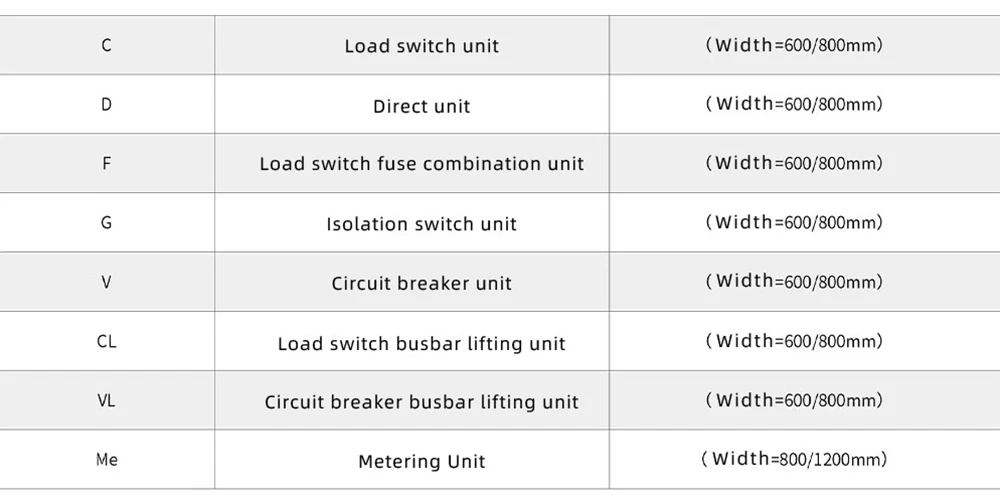

Operation Condition

Technical Parameter
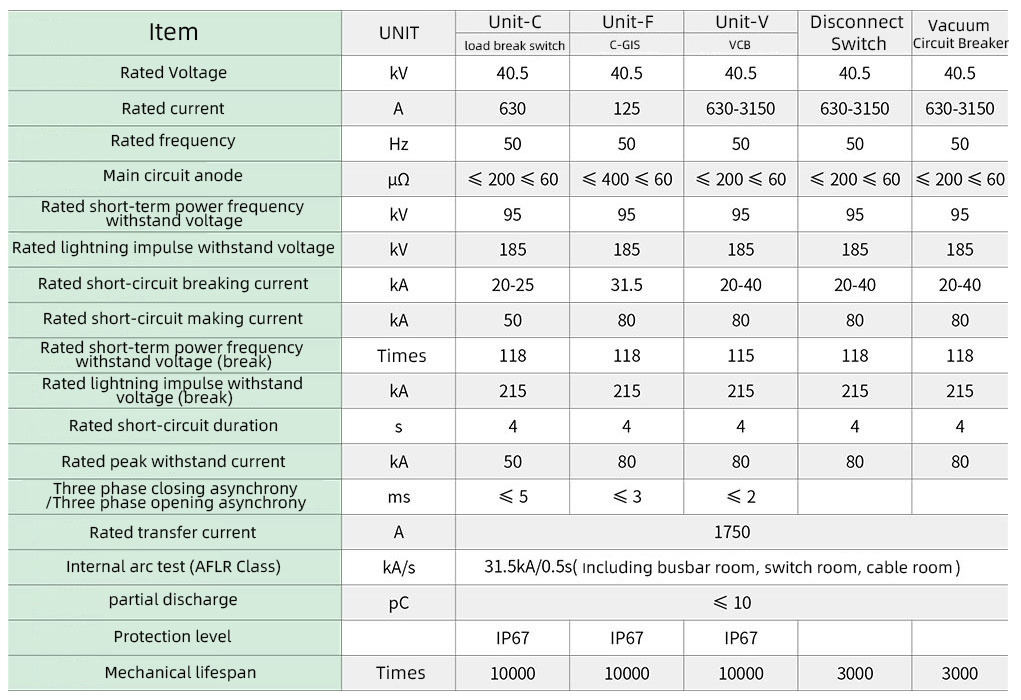
Grounding and Separation
The C-GIS gas-insulated medium-voltage switchgear is available in a range of current levels, including 630A, 1250A, 1600A, 2000A, 2500A, 3150A, and more. Customization options are offered for the cabinet size to meet specific needs. The exterior of the cabinet is constructed from aluminum zinc-coated material, while the gas box is assembled with 304 stainless steel plates. Each unit can be expanded and combined independently as per the design requirements. The cabinet of 40.5KV 3150A Medium Voltage Gis Gas Insulated Switchgear is segmented into various sections, such as a secondary control room, busbar room, circuit breaker room, operating mechanism room, and cable room. With a cable connection height of up to 700mm, maintenance and installation are made easier. Additionally, the cabinet features a comprehensive grounding protection system. It consists of separate functional compartments, including switch rooms, busbar rooms, cable rooms, and secondary circuit channels, each separated by a grounding metal partition for independent operation.
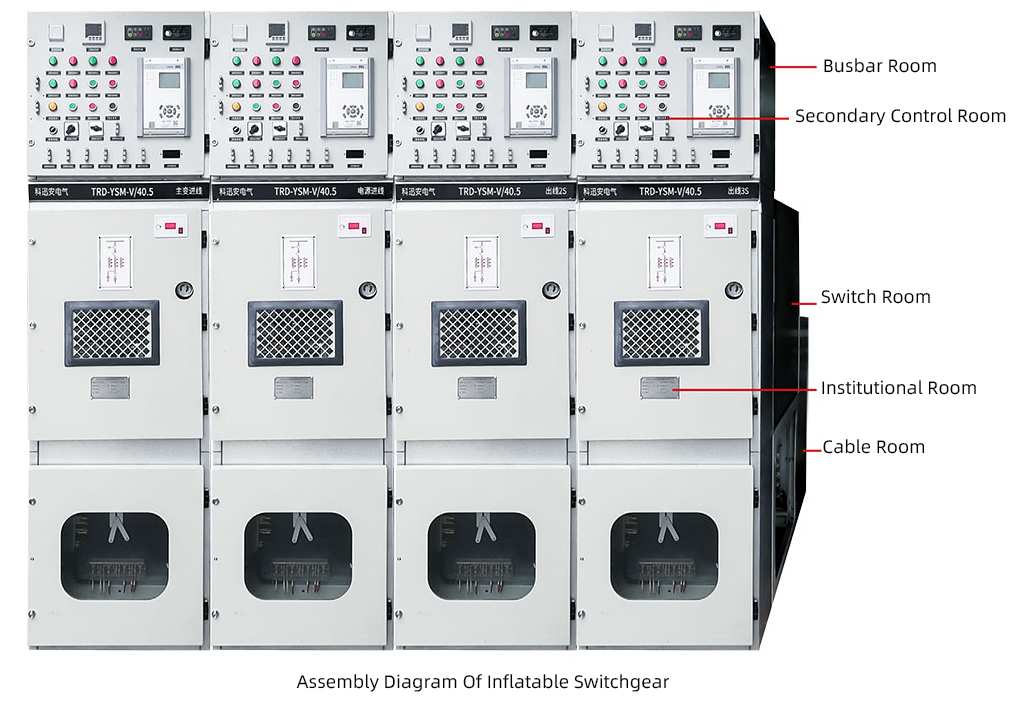
Secondary control room
The cabinet is situated beneath the secondary control room, which features boards for accommodating components and brackets for securing terminal blocks. This room allows for the installation of various devices, including wiring terminals, small busbar terminals, and comprehensive protection devices. These devices enable the system to perform various functions such as remote control, telemetry, remote signaling, and local monitoring. The cabinet can be easily connected to small busbars via circular holes on the left and right side panels and terminals.
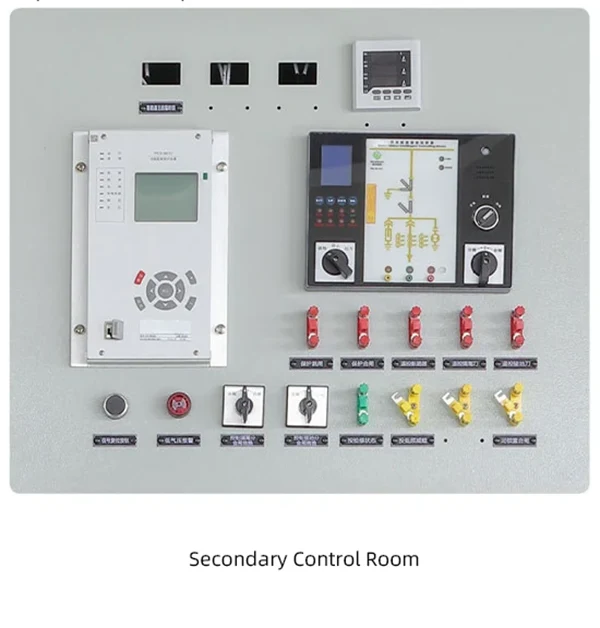
Busbar Compartment
The upper part of the air box includes both the busbar area and the isolation device. When the circuit cabinet is placed on the support on the ground, the cabinets and busbars on both sides are connected securely through a process called cabinet merging.

Switch Room
The gas-insulated switchgear boasts a compact, plate-like design, with two separate chambers arranged vertically within the cabinet's center. The upper chamber houses a three-position isolation switch, while the lower chamber features a vacuum circuit breaker. This configuration allows for efficient use of space, but the close proximity of components in the single-chamber design can compromise reliability. In contrast, the multi-chamber structure, while more complex and costly to produce, offers enhanced safety and ease of maintenance, as each component is isolated from the others, minimizing potential interference and enabling straightforward replacement.

Institutional Room
The spring-based system is positioned in a horizontal plane, isolating the circuit breaker and isolation mechanisms. It's designed to work seamlessly with the vacuum arc extinguishing chamber's insulation rod, streamlining the transmission process. This integration optimizes the mechanism's output, which in turn enhances the circuit breaker's performance, reducing power consumption and improving mechanical reliability and adaptability.
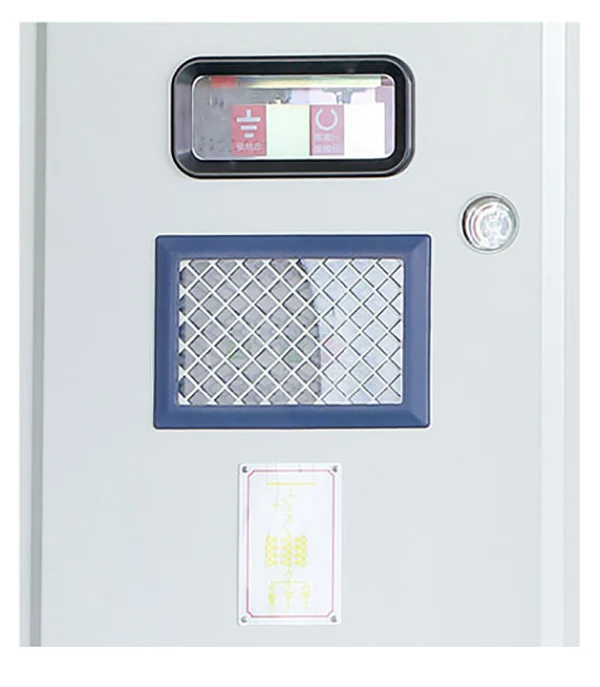
Cable Room
The cabinet is positioned above the cable room, and it has a distinct pressure relief pathway that operates independently. The distance between the ground and the cable connection terminals can reach up to 700mm. In accordance with regulations, grounding interlocks are installed in the cable room, enabling the installation of two cables and lightning arresters in each circuit. Notably, the internal cone insertion method is used to connect the incoming and outgoing cables and lightning arresters.
